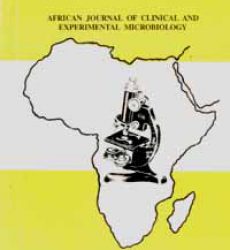[1]Nkasa, H. L., [2]Kabena, O., *2Ngbolua, J. K., 3Matafwari, Z. L., 3Ndamba, P. M., 4,5Lunguya, O. M., 6Ambimani, C. I., 1Mifundu, M., 1Mulenga, M. C., 1Malongwe, K. J., 1Kayembe, S. J., and 1Taba, K. M.
1Department of Chemistry, Faculty of Science, University of Kinshasa, Democratic Republic of the Congo
2Department of Biology, Faculty of Science, University of Kinshasa, Democratic Republic of the Congo
3Higher Institute of Medical Technology of Kinshasa, P. O. Box 774 Kinshasa XI Section: Laboratory Technical, Democratic Republic of the Congo
4Department of Medical Biology, Faculty of Medicine, University of Kinshasa, Democratic Republic of the Congo
5National Institute of Biomedical Research, Kinshasa, Democratic Republic of the Congo
6Higher Pedagogical Institute of Isiro, Democratic Republic of the Congo *Correspondence to: jpngbolua@unikin.ac.cd
Abstract:
Background: Mathesia is a hydro-alcoholic emulsion, colourless and somewhat viscous, based on extracts of medicinal plants and containing saponins, polyphenols, tannins, and reducing sugars. In this study, we proposed to carry out an in vitro study of the antibacterial activity of phytomedicine Mathesia on strains of bacteria isolated from diabetic foot ulcers and chronic wounds of patients in care in the University Clinics and the Hospital Centre of Mont Amba in Kinshasa, Democratic Republic of the Congo. Continue reading “In vitro antimicrobial activity of Mathesia® on bacterial isolates of wound infections in University Clinics and Hospital Centre of Mont Amba, Kinshasa, Democratic Republic of the Congo”

